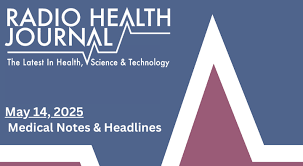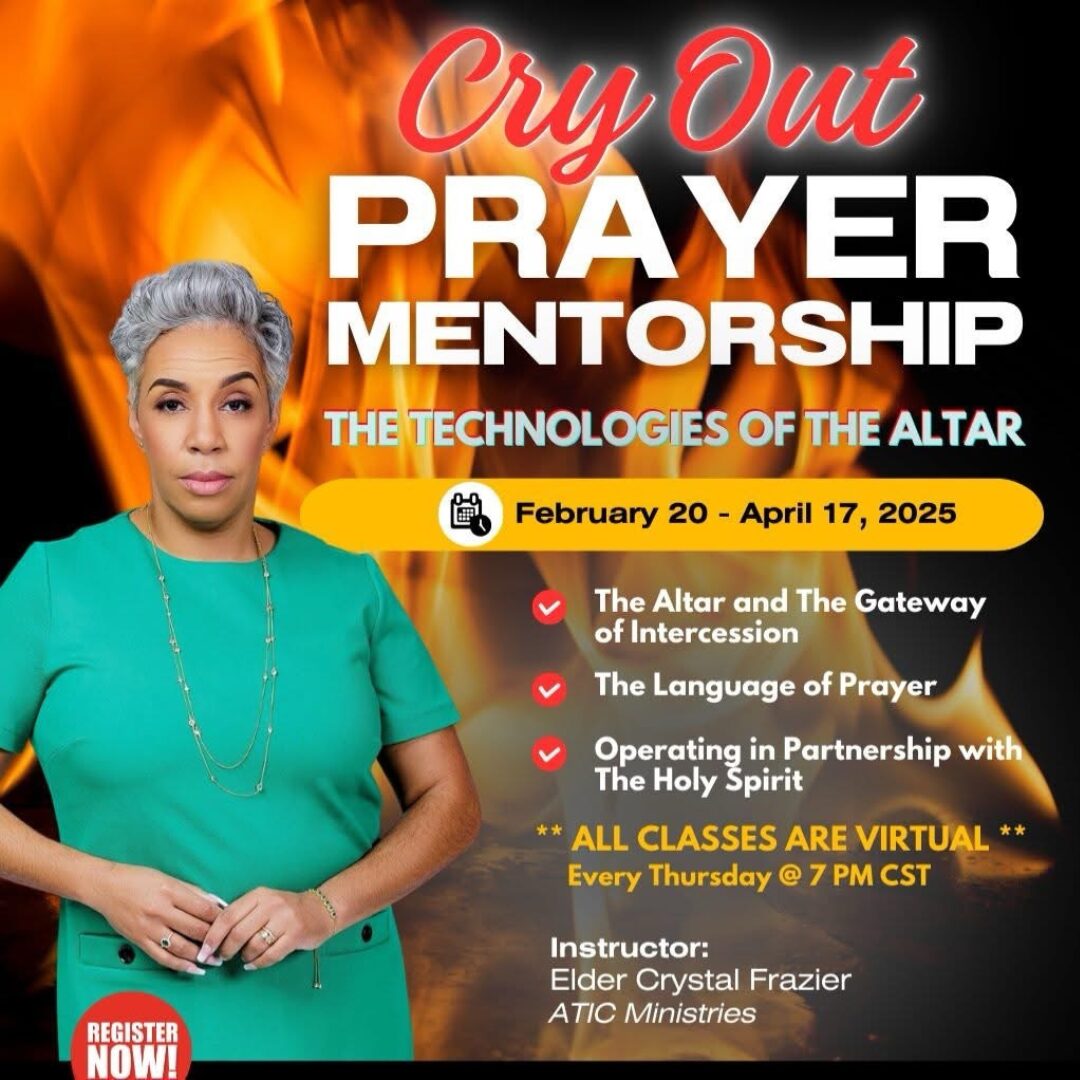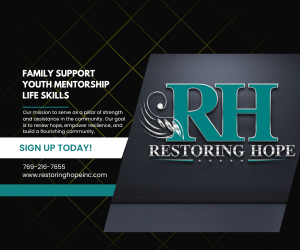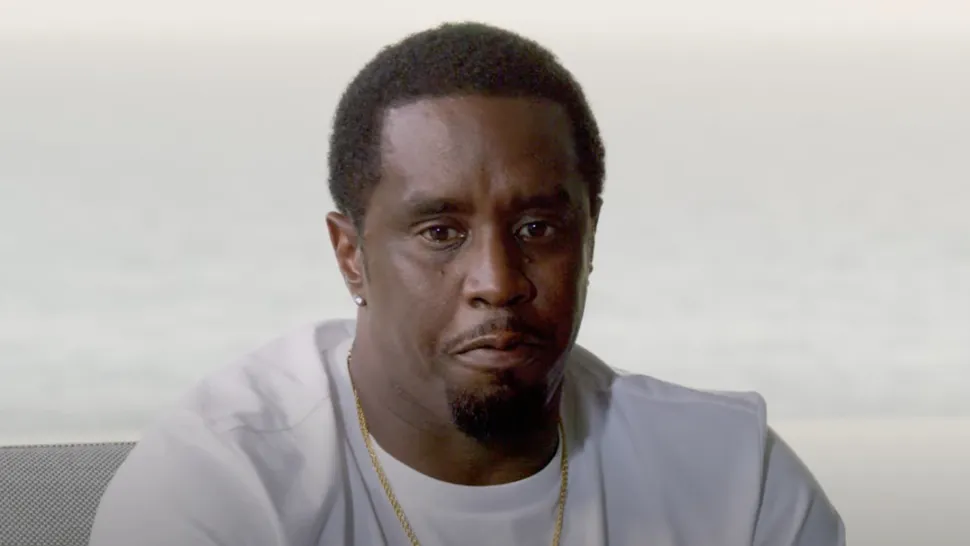Major Takeaways:
The notion that all suicides are preventable is a damaging myth that can increase guilt and shame for loss survivors, as some individuals do not show clear warning signs.
Suicide is often an impulsive act, and one of the most effective prevention strategies is creating time and space between a person in crisis and lethal means.
Listening without judgment is one of the most powerful tools for helping someone experiencing suicidal thoughts, as it provides connection and can de-escalate a crisis.
Are All Suicides Preventable? Debunking Myths and Understanding the Complex Reality
You’re listening to Radio Health Journal, the trusted news source for medicine, science and technology. I’m Elizabeth Westfield. I’m Mayan Vastabetancourt.
And I’m Greg Johnson. This week, why do older drugs have so many more quality issues? If you think of most industries, you would think companies would get better, you know, through the learning curve. They would get better and better at making the products that they’re making.
But in this industry, the older drugs are the drugs that have kind of run the race to the bottom. But first, are all suicides truly preventable? Not every person with thoughts of suicide shows us a sign. They might protect their loved ones and family from that.
They might be showing someone else a sign. And it’s quite possible there are no signs. All that and more this week on Radio Health Journal.
My perfect day has sand, salt, water and friends. But my moderate to severe plaque psoriasis can take me out of the moment. Now I’m all in with clearer skin thanks to Sky Rizzi, Rizin Kizumab Rizza, a prescription-only 150 mg injection for adults who are candidates for systemic or phototherapy.
With Sky Rizzi, most people saw 90% clearer skin and many were even 100% plaque-free at four months. Sky Rizzi is just four doses a year after two starter doses. Don’t use if allergic to Sky Rizzi, serious allergic reactions, increased infections or lower ability to fight them may occur.
Before treatment, get checked for infections and tuberculosis. Tell your doctor about any flu-like symptoms or vaccines. Thanks to Sky Rizzi, there’s nothing on my skin and that means everything.
Ask your doctor about Sky Rizzi, the number one dermatologist-prescribed biologic in psoriasis. Visit SkyRizzi.com or call 1-866-SKYRIZZI to learn more. Fall is here and signs of transition are everywhere.
It’s a time when most of us feel renewed and optimistic. But September is also National Suicide Prevention Month. Unfortunately, it’s a year-round issue.
During the month of April, more people take their own lives than any other time of year. The myth that suicide rates reach their peak during the holidays is just that, a myth. Here’s another one.
Every suicide death is preventable. In fact, no matter how well-intentioned, alert, and diligent people’s efforts may be, there’s no way of preventing all suicides from occurring, as stated by the Nevada Division of Public and Behavioral Health Office of Suicide Prevention. We strive for 100% suicide prevention, but people are complex, hence suicide prevention is equally complex.
We don’t know always those signs. We aren’t always aware of those signs, but also not every person with thoughts of suicide shows us a sign. They might protect their loved ones and family from that.
They might be showing someone else a sign, and it’s quite possible there are no signs. I do believe that is rare. Most people do show some indication that they’re struggling and having thoughts of suicide or struggling with other mental health concerns.
That’s Misty Vaughn-Allen, Suicide Prevention Coordinator with the state of Nevada in the Division of Public and Behavioral Health. She says the notion that all suicides can be prevented is hurtful and inaccurate. In 2022, the CDC recorded almost 50,000 deaths by suicide in the U.S., so it’s an important distinction to make, especially for suicide loss survivors.
Yes, suicide prevention is a great thing, and I’m glad to see the new hotline number and all of the good work that American Foundation for Suicide Prevention is doing. I would argue that not all suicides are preventable, and perhaps I say that because my daughter’s wasn’t and I wasn’t able to. So maybe I’m being defensive about it, but I’ve talked to many other parents who bristle at the idea.
That’s Eileen Vorbach-Collins, author of Love in the Archives, a patchwork of true stories about suicide loss. Her daughter, Lydia, took her own life 24 years ago. Lydia was 15 years old.
Certainly, my daughter had mental health issues and had her own clinical diagnoses and was hospitalized. And it wasn’t that I didn’t see what we like to call the signs. And that’s one of the issues I have with the whole idea of getting on the prevention bandwagon.
Certainly, we all want to see suicide prevention, and I’m certain that it does work to a degree. It’s when I hear that all suicides are preventable that it makes me bristle because they are not. You know, I worked in mental health.
I knew the signs. My daughter exhibited many of them, was hospitalized, had a therapist, was medicated for a while. But at some point, you cannot watch a child 24 hours a day.
As a parent, Collins suffered the common stigma of shame and guilt after Lydia’s death. Had she done enough to protect her daughter? Could she have prevented Lydia’s suicide? Collins sought help from other suicide loss survivors through various support groups. If it hadn’t been for some of these survivor groups, I don’t know how I would have managed.
I absolutely needed to find other people who had gone through this. I have so many people in my life because of these support groups who have felt the same and I’m able to look at them and say, no, this wasn’t your fault. You know, you did what you could do.
And then finally being able to tell myself that. In addition to the myth of prevention, Collins says another misleading idea is that suicide is always a selfish act. I never thought of it that way.
I thought of it as she tried so hard. And when I read her journals, when I read her journals, she fought it for a long time, as young as she was. And I hear this from many other parents.
It’s not like they did this to hurt us. They did it because they couldn’t take the pain anymore. Rick Strait is the Substance Use Division Director and Suicide Prevention Coordinator for the Community Counseling Center in Southeast Missouri.
He’s also a suicide attempt survivor. I struggled with depression my whole life. Growing up as a child, didn’t know it was depression at the time.
And then I lost my brother in a car accident. And that took that grief, that spiraled the depression to the point that I felt completely alone. In retrospect, I know I wasn’t alone.
I had parents that were also hurting, but I felt like I had to not let them know I was hurting. That way I could be supportive of them. I had a wife at the time and I had a newborn baby.
And I was in the military at the time. So I had a lot of friends that are my squadron that I, you know, so I knew like looking back, I had so many people in my corner, but I just felt like I wasn’t. I felt like it was just me.
Fortunately, Strait’s mom interrupted his attempt. Though he was initially angry, Strait quickly realized how grateful he was to be alive. Yes, I was glad.
But I still struggle with depression and suicidal thoughts for many, many more years. But after the attempt, though, I kind of made a promise myself that I wouldn’t attempt again because I realized how it was going to impact my wife at the time. And so I tried to make that promise myself that it would never happen again.
Strait says he eventually learned how to talk about his feelings, though it took a long time to be comfortable with. And when he met with other suicide attempt survivors, he realized that so many more people struggle with these thoughts than just him. Because that was one of the worst feelings about when I was having thoughts of suicide is I really thought that nobody else would ever understand that there’s nobody else has ever been through this.
And so as I learned over the years that there are so many people have been through this. So many people have lost people to suicide. So many people have made attempts and lived.
And then so many people are struggling with those thoughts and never act on them. And so even though I’m not glad that they struggled also, it was kind of a lightning effect for me when I realized, OK, I’m not alone. This isn’t some just messed up brick thing.
This is this happens. And, you know, the more I learn and how often it happens, it has helped me feel kind of normal. And then eventually I got some counseling and some help to get through the depression.
Today, Strait is doing well, but he still has bad days. The difference is that he talks about his feelings with his family and friends to let them know when he’s struggling. We don’t have to spend much time dwelling on it, but it keeps those thoughts from festering and becoming more intense.
Von Allen says many people live with ongoing thoughts of suicide on a daily basis. Thankfully, a lot of them have found successful coping strategies. There are many people with persistent thoughts of suicide, and they live and work with us and keep themselves safe.
When their thoughts start to escalate towards suicide, they have a safety plan that they need to work. And that could be reaching out to a hotline. It could be walking the dog.
It could be talking to your support system. Research shows that suicide attempts are often impulsive. A person might deliberate for five minutes or less after having suicidal thoughts before taking action.
It is one of the most preventable forms of death. It is. But again, we aren’t always given the gift of time and those signs within that time.
There are certain people who might have an event occur that activates thoughts of suicide and lethal means are readily accessible. One of the most proven prevention strategies we can implement is giving that person with thoughts of suicide space and time away from that lethal means, be it medication, be it a firearm. We give them space and time.
Often they can deescalate. They can reach out for help or someone can intervene. So that’s really a crucial element here.
But we don’t always get that opportunity. And as suicide rates continue to rise, Von Allen says that prevention is crucial. However, there’s always more to learn, especially from people like Strait.
Those who survive their own attempts of suicide teach us how to be better at the work we do with prevention. Under our best efforts and our most diligent work, we can still lose someone that we’re trying to help. But the better we get, the stronger our safety net will become.
If anyone listening to this program is feeling depressed or having suicidal thoughts, you can dial or text 988 from anywhere in the country. Sometimes just talking to somebody that you know that cares and can help listen. And sometimes it can be enough on its own and they get a trained person.
They can ask them some questions and just be there for a conversation. And then most states also have, you know, walk in mental health clinics as well. I know in Missouri, every county has a Department of Mental Health funded place where they people can walk in and they can talk to somebody every day, any day.
And if someone you know is depressed or has shared that they’ve been having suicidal thoughts, STRAIGHT says it’s important to be a listening ear for them. If we can have compassion and listening and ask them questions and then just be present, even if we know it’s a suicidal crisis or not. So let’s say there is a teenager that brings that to them.
Just being there and being in that moment and tell me what’s going on and then truly listening. And as a parent myself, it’s hard not to try to fix right away. We want to go into problem solving and tell all things are going right.
Just listen and kind of shut that parent mode off for a second and just, you know, the writing reflex and just listen. I think that’s one of the most powerful things we can do, whether it be any type of mental health thing, whether it be just a bad day and no suicidal crisis or somebody that’s having suicidal thoughts. If we can just take a few minutes and just truly listen to what they’re saying and not jump to conclusions.
Collins book Love in the Archives, a patchwork of true stories about suicide loss is available now online and wherever books are sold. You can learn more about suicide prevention and all of our guests on our website, RadioHealthJournal.org. For more behind the scenes, follow Radio Health Journal on Facebook, Instagram and X. The segment originally aired in April of 2024 and was written and produced by Polly Hanson. Our lead producer is Kristen Farah.
Our executive producer is Amir Zaveri. I’m Elizabeth Westfield. Coming up, are your prescription drugs safe? When Radio Health Journal returns.
Hey, mom, I’ve been meaning to talk to you about some new COVID information I saw online. I read that black folks like us with certain conditions like diabetes, heart disease, mental health conditions or being 50 and older like you are at high risk. Boy, you sound like a commercial.
I’m just saying. I know you love your ginger teas and essential oils. But remember, there are treatment options for COVID-19.
I promise if I get sick again, I’ll call my doctor to ask about my options. Visit WeTalkWeRise.com to learn more. Brought to you by Pfizer.
Moms and dads, do you wish you could know where your kids shoes are at all times? Now you can with Skechers’ newest Apple AirTag compatible sneakers, Find My Skechers. There’s a clever hidden AirTag compartment under the shoes insole. It’s sleek, secure and your child can’t feel or see it.
Then you can check where your kids shoes are on the Find My app. Plus, they’re available for boys and girls. Get Find My Skechers at Skechers.com, a Skechers store near you or wherever kids shoes are sold.
Apple AirTag sold separately. Whether you have a chronic condition or periodic headaches, the quality of pharmaceuticals affects every American. To ensure a stellar end product, every step of the process must be held to a high standard from ingredient sourcing to labeling.
These guidelines are called the Current Good Manufacturing Practice Regulations. The FDA uses them to guarantee accurate design, monitoring and control of manufacturing processes and facilities so that every product is safe and reliable. The good manufacturing practices, the GMPs, as the FDA calls them, were written explicitly to ensure consistently high quality drugs leaving facilities.
So the FDA chose to, a long time ago, to manage quality through the process versus the products. They don’t do a lot of product testing. Instead, they go and inspect the process both before they approve a facility to produce a drug and then ongoing, supposed to be about every two years.
That’s John Gray, a Dean’s Distinguished Professor of Operations and Business Analytics at The Ohio State University. Despite the FDA’s oversight, there’s been various reports of GMP violations at facilities in India. In fact, a 2019 book by Catherine Ebon exposed Indian generic drug companies for purposefully deceiving and defrauding customers with low quality products.
However, Gray says many of the violations aren’t officially recorded, partly because it’s extremely difficult to access the data. The pharmaceutical industry is notoriously private when it comes to where their drugs are produced, and they’re not required to disclose that information to consumers. I believe that it does serve some in the industry well to have a lack of transparency and to have all consumers and providers believe that there is absolutely no difference between all of the possible generic drugs they might take for a given condition.
There’s not supposed to be a difference, but just like with any other industry, things fall through the cracks. But when quality drops in this business, it can be life or death for consumers. Gray and his team stumbled across a goldmine of information that helped them piece together data that’s often kept hidden from researchers.
We were actually working on a grant with the FDA at that time and kind of got a hint that, hey, there’s a California law that requires drug companies to put the facility in their label. Go kind of look that way. And we found the law, but still that didn’t make it obvious as to how to go about to do this.
Thankfully, Gray’s PhD student was able to dig through a bunch of labels on DailyMed, the National Library of Medicine’s database of the most recent labeling. But unlike the nutrition information on the side of a cereal box, the labeling for prescription drugs are each 20, 30, even 40 pages long for one product. Gray says many of them identify their manufacturers through a Dunn’s number, which is a unique business tag created by the credit bureau Dunn and Bradstreet.
It’s a number that if you subscribe or your library subscribes to the database, you can type it in and then it will give you the facility information. And that was structured in a way that he was able to automatically extract more than half of the drugs. He was able to find where the production was located and then through a little more manual effort was able to get a higher percentage.
It wasn’t 100 percent, but this novel source of data gave them much more than other researchers have had access to. Gray and his team used this information to compare the number of serious adverse events caused by generic prescription drugs made in different locations. While various American facilities have had issues with GMP compliance, Gray’s analysis published in the journal Production and Operations Management reveals that the same drugs coming out of India seem to be much riskier for consumers.
The adverse events data is messy. And so we’re and then this is a model predicted number. But the number we quote in the paper is about a 50 percent higher incidence of adverse events than if it coming from the same drug from India, controlling for volume, most importantly, but also controlling for other facility and drug characteristics compared to, again, the exact same active ingredient dosage form and route of administration from a domestically produced drug.
So that’s kind of the kind of valid number, most carefully constructed numbers, about that 50 percent higher. We if you read the paper closely, we put a lot of cautions around that because, again, the adverse events database is messy. The FDA cautions against using its adverse events reporting system as a sole indicator of drug quality because the reports haven’t been medically verified.
However, the FDA does use this same database as a tool for postmarket surveillance to identify drug safety issues. Interestingly, this data was able to reveal an interesting pattern. Most of the serious adverse events could be linked back to older drugs.
If you look at the drugs, the newer generic drugs, there actually wasn’t a statistically significant difference, whereas for the drugs that were older than the median, which was about eight years, that was really where the result was coming from. And that’s kind of interesting, because if you think of most industries, you would think companies would get better through the learning curve. They would get better and better at making the products that they’re making.
But in this industry, the older drugs, the drugs that have kind of run the race to the bottom. With so much secrecy within the industry, Gray says the buyers purchasing decisions are limited mostly to which product is cheapest. And since all generic drug manufacturers are required to use the same active ingredients, dosage form and route of administration as the name brand, it seems like a win-win.
That is, until manufacturers stop adhering to the GMP regulations. Gray’s best guess as to why the pharmaceutical industry’s trends drastically differ from others is simple. Money.
It’s cheaper to not fully comply with GMPs, which means more competitive pricing and higher profit margins. The FDA does have inspections to make sure all facilities are up to code. But while domestic inspections are unannounced, they’ve historically given advance notice to foreign facilities.
That’s quite a different environment, right? If you’re going to get a few months notice that the FDA might be coming or is going to be coming, say, in three months from now, you have time to kind of clean things up a little bit. And if you know the exact date they’re coming, you have time to even have the right employees at the facility that will answer the questions well and the best trained employees and things like that. Because the FDA inspections are quite thorough.
I mean, the FDA comes in and talks to employees on the floor. They look at records, they get into the computer systems, but you have time to clean that up. Whereas if they just show up unannounced and then they have the right to enter the facility immediately, you’re just caught in your normal state.
And so these pre-announced inspections allow the normal state maybe to be a little less than ideal. And then when the inspector arrives for you to be a little above your normal state and maybe not be forced then to fix problems because maybe they’re not detected. Earlier this year, the FDA recently announced plans to expand its surprise inspections to foreign facilities that produce food, drugs and medical products for American consumers.
Additionally, investigators will no longer be able to accept travel accommodations from regulated industry members. While it’s unclear when this plan will go into effect, it’s a big step towards solving these drug quality issues. Gray says another important shift would be increasing the transparency so that buyers know where their products are being made.
We prefer location and quality transparency because we don’t want, if we just do location transparency, there would be a bias or tendency toward domestic manufacturing and maybe a bias against India and China specifically. But there are good manufacturers in India and China. And so if we do location and quality transparency, now a valid and reliable quality metric needs to be created.
The FDA probably has a reasonable one, but I don’t think they’re going to release it. And then a high quality Indian manufacturer could still compete and a low quality domestic manufacturer would be challenged. And so we could still have this global supply chain, which I think is necessary and appropriate, but we would not have this cost only buying practice and this race to the bottom being run.
However, Gray mentions that it’ll be hard to create true change without some reform on the buyer side. In pharmaceuticals, the buyers aren’t the consumers. They’re often pharmacy benefit managers or PBMs who are negotiating and purchasing on behalf of pharmacies and insurance companies.
The consumers or the doctors might notice where the drugs are located or that they’re a four star rated drug instead of a five star rated drug or something like that. But it’ll be difficult for them to do anything if their insurance company only covers these two NDCs for this treatment. And so a bigger thing is some and it’s a harder thing.
You know, transparency is relatively easy. It would be easy to write down the mandate for transparency. I’m not saying be easy to implement, but it’s easy to imagine.
Right. It’s easy to imagine doing on and out inspections. We’ve already done pilots.
We know how to do it. But fixing the middle of the pharmaceutical supply chain between the manufacturers and the consumers is pretty hard. There’s really powerful entities in the middle there.
He’s not saying it’s impossible, but it’ll require some elbow grease to get to the real change that’ll help American consumers. You can find more information about John Gray and all of our guests on our website, RadioHealthJournal.org. For more behind the scenes, follow Radio Health Journal on Facebook, Instagram and X. Our writer producer is Kristen Farrah. Our production manager is Jason Dickey.
I’m Greg Johnson. Radio Health Journal returns in just a moment. You know, that big bargain detergent jug is 80 percent water, right? It doesn’t clean as well.
80 percent water? I thought I was getting a better deal because it’s so big. If you want a better clean, Tide Pods are only 12 percent water. The rest is pure, concentrated cleaning ingredients.
Oh, let me make an announcement. Attention shoppers, if you want a real deal, try Tide Pods. Stop paying for watered down detergents.
Pay for clean. If it’s got to be clean, it’s got to be Tide Pods. Water content based on the leading bargain liquid detergent.
Switching to Progressive is a game winning call, and that reminds us of other game winning calls in the history of sports. It was a doubleheader in August and really hot inside the concession stand. So instead of waiting for people to come to me, I figured I’d walk around yelling, hot dogs here.
And that’s how I became the first hot dog vendor in sports. OK, not really a game winning call, but it was a good call. You can make one to switch to Progressive and you could save hundreds.
Progressive Casualty Insurance Company and affiliates not available in all states. Do Crohn’s disease or ulcerative colitis symptoms keep coming back? Tremphaya, gaselkomab may help with rapid remission achieved at 12 weeks and lasting clinical remission at one year. Some even saw visible improvement of their intestinal lining at 12 weeks and one year.
Tremphaya is a prescription medicine used to treat adults with moderately to severely active Crohn’s disease and adults with moderately to severely active ulcerative colitis. Serious allergic reactions and increased risk of infections and liver problems may occur. Before treatment, your doctor should check you for infections and tuberculosis.
Tell your doctor if you have an infection, flu like symptoms, or if you need a vaccine. Healing is possible with Tremphaya. Approximately three out of 10 patients were in endoscopic remission at one year based on areas visualized on colonoscopy, which may not represent the deeper bowel layer or entire GI tract.
Individual results may vary. Ask your doctor about Tremphaya today. Call 1-800-526-7736 to learn more or visit TremphayaRadio.com. Medical Notes this week.
Why are weight loss drugs so difficult to take long term? GLP-1 medications help suppress a person’s appetite, but the various side effects like vomiting and nausea cause a majority of patients to stop using the drugs within a year. Now, a research team has found a new brain region to target that won’t cause these gastrointestinal symptoms. When tested in mice, the injection helped the animals lose weight without negative side effects.
The study is published in the journal Science Translational Medicine. Alcoholism doesn’t just affect one person. New research in the journal Aging and Disease shows that paternal drinking habits before conception can negatively affect fetal development.
It can also cause symptoms of early aging in kids, even when consuming the legal limit. And the effects continue to worsen if both parents drink. And finally, fix your bad knees without surgery.
Osteoarthritis is a leading cause of adult disability, and there’s no way to reverse the damage. However, scientists have found that making a small adjustment to how someone walks can cause the same amount of relief as medication. It also reduces cartilage damage in the knee.
The study is published in The Lancet Rheumatology. And that’s medical notes this week. I’m Maayan Vastabetancourt.
I can’t believe how spotless my floors look after using the Swiffer Power Mop. No more dragging around a heavy mop and messy bucket. Now I get the same deep clean without all the work.
Thanks to the powerful solution and scrubbing pad of the Swiffer Power Mop, dirt and grime don’t stand a chance and I don’t break a sweat. Mic drop. I mean mop drop.
A smarter way to mop. Try it or your money back. Oh, how’s that flu, babe? Did you take Dayquil Intense Flu yet? Nah, I got this.
OK, I don’t got this. You stay on the couch and I’ll grab the Dayquil. Undo your flu symptoms with Dayquil Intense Flu.
Dayquil Intense Flu provides powerful relief of your flu symptoms. I’m ready for that to-do list. Wow, you do got this.
Dayquil Intense Flu. The daytime coughing, aching, aching fever under your flu medicine. Use as directed.
Keep out of reach of children. Thank you for joining us this week and every week as we break down the science stories you need to know. You can find all of our past segments and guests on our website, RadioHealthJournal.org or wherever you listen to podcasts.
Follow us on Instagram, Facebook and X for daily content and tune in next week for another edition of Radio Health Journal.














